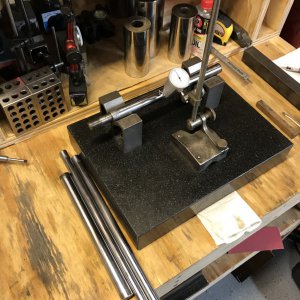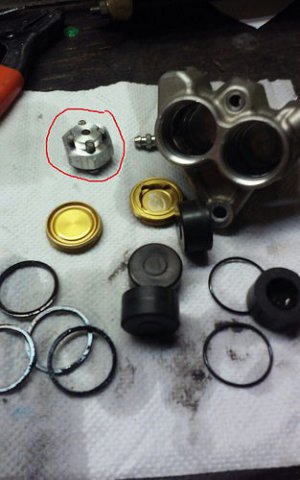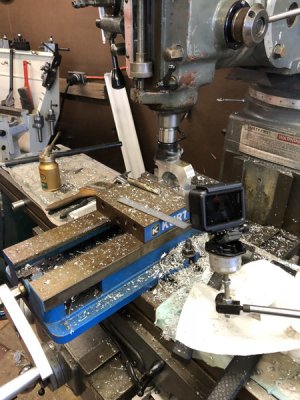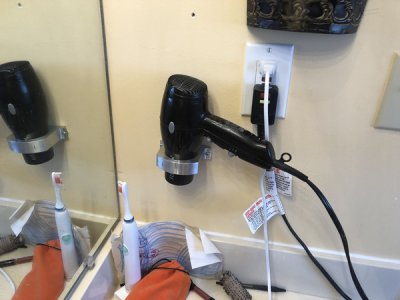I brought this home from work last week. It's a butt hinge, or simply "butt" to use the old vernacular, from the front door. Fairly old, 1889 to be exact, and it sees a huge volume of people every year. So much so that the wear between the bronze leaves has removed close to an eighth of an inch. That in itself isn't the reason I'm working on it though, it's because the pin sheared off inside one of the barrels rendering the pair useless. The joint is also quite deformed, not just evenly eroded, so before putting in a new pin I wanted to bring the joint back into line with a bit of cleanup milling.
View attachment 256691
View attachment 256692
Pretty simple setup on the Atlas MF using an angle block and a couple of clamps. What I didn't expect was a steel sleeve inside the cast bronze leaf. I've worked on many of our door hinges and that detail is not typical. Could have something to do with being part of an entry set (exterior), I'm not sure. This was the top of the line hardware in its day though -- very, very nicely made.
View attachment 256694View attachment 256693
Anyway, back to the job. Both leaves cleaned up fine and the gap was now measurable. I turned an acetal shim washer, plus two extras of slightly different thicknesses, which keep the leaves at proper alignment and also provide good wear qualities. That left the pin to come up with, but instead of a straight 1/4" piece of rod the thing turned out to need 17/64". Dang! So, I turned 17/64" from my closest size drill rod which was 3/8". Worked well though, my little 618 is ideally sized for this type of thing.
View attachment 256695
View attachment 256696
View attachment 256697
So back into service it will go next week, maybe for another hundred years, who knows. And as usual, thanks for looking.
-frank






